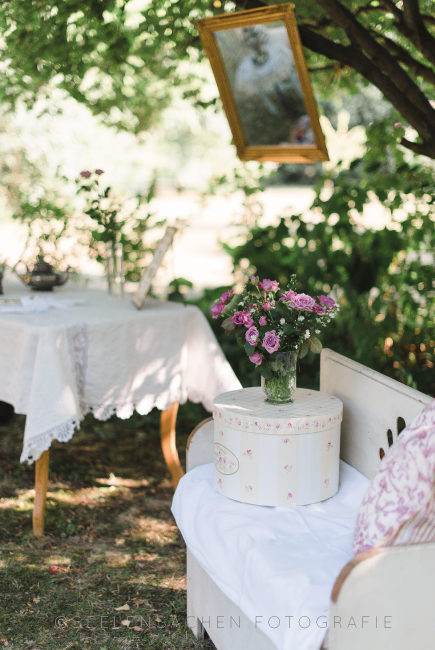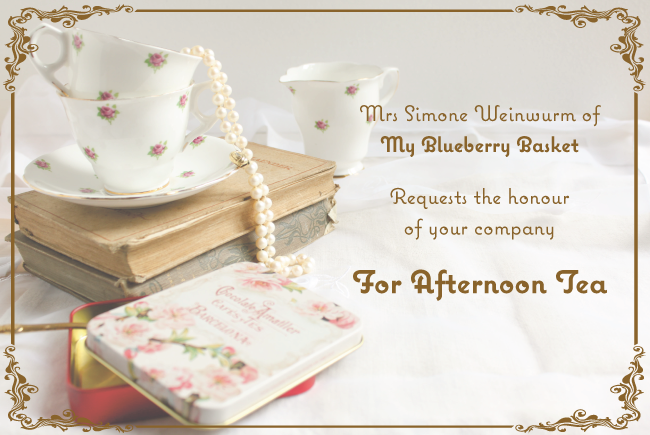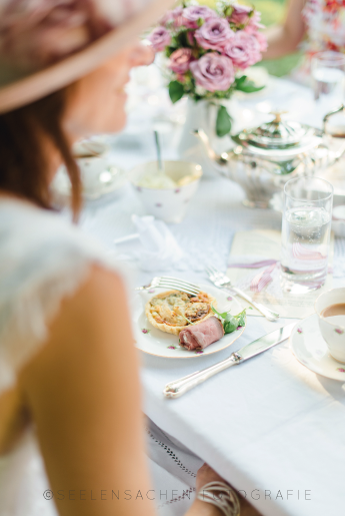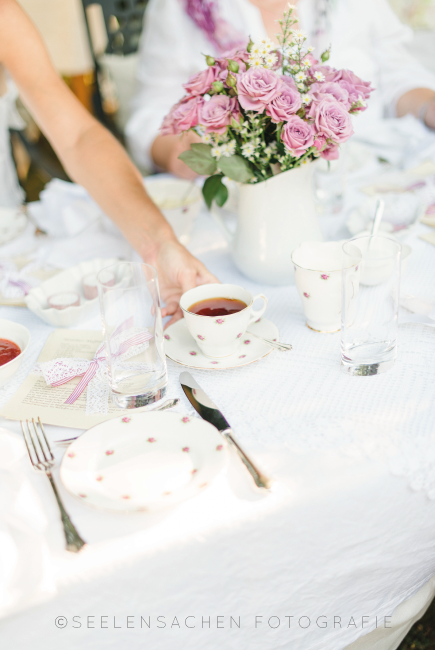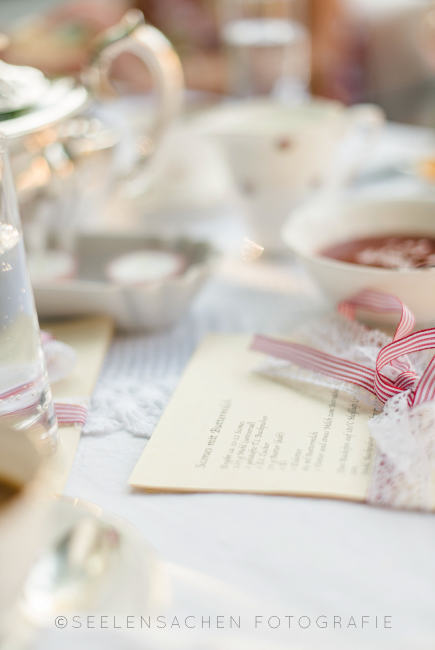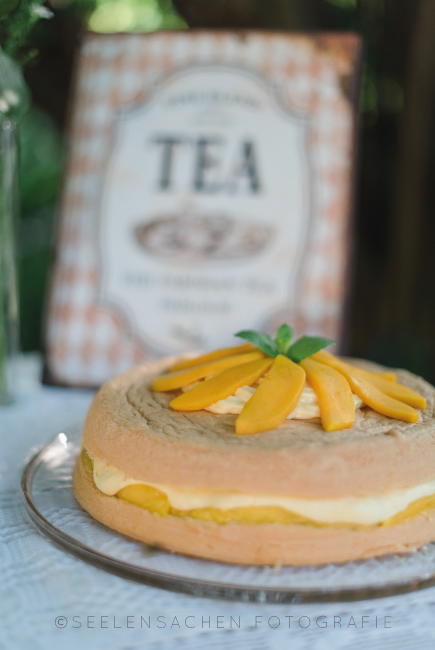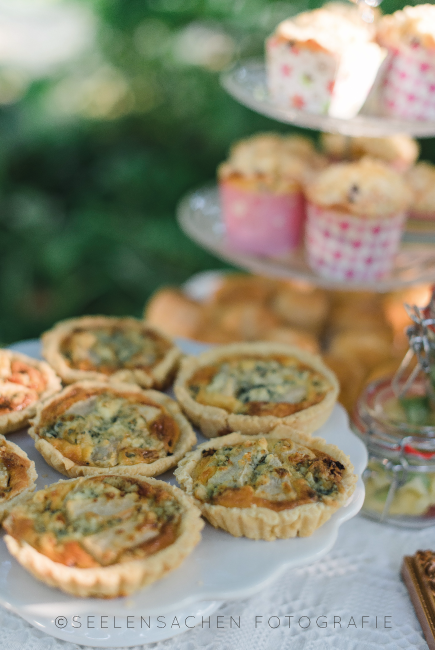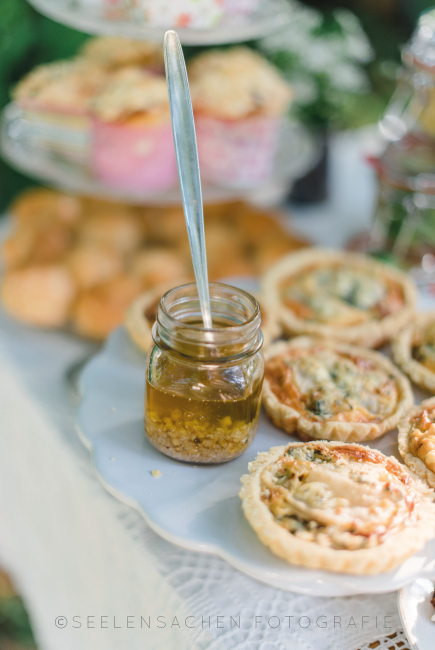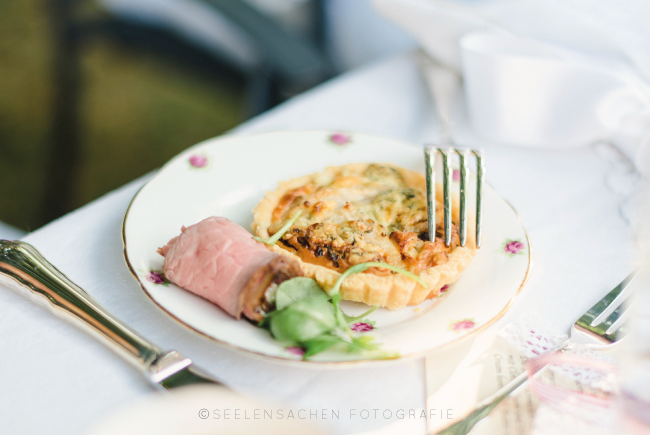
“I don’t drink coffee I take tea my dear.”
Sting, Englishman in New York
What is more delightful than the ceremony of afternoon tea? Be it at home, on your own or with friends, be it in a cozy tea room or be it in a nice hotel enjoying luxury afternoon tea. It’s just as Agatha Christie once said:
“Tea! Bless ordinary everyday afternoon tea!”
Agatha Christie
Afternoon Tea Etiquette
Afternoon tea has always been a special ritual and ceremony involving proper behaviour and the abiding by certain rules. The following etiquette will ensure that you can enjoy a delightful afternoon.
Invitation
You are planning to invite your friends for tea and want to make it a special occasion? Why not send out invitation cards?
Greeting
Make sure you greet your guests cordially and make them feel at home. (It is actually stupid of me to include this into my rules, as you’d do this anyway.)
Napkin
Once you have taken place unfold your napkin and place it on your lap. If you leave the table temporarily put the napkin on your chair and not on the table beside your plate. Also, never place any other items, like your handbag, sunglasses, mobile phone, etc. on the table.
Tea in first or milk, or lemon
There is no universal agreement as to what comes first, tea or milk? In the 19th century ‘milk in first’ was often attributed to lower social classes who could not afford expensive, high temperature-resistant china. It is said that they put milk in first in order to avoid any cracks in the cup. Nowadays it’s more common to put in tea first. You can also drink your tea with lemon, but never ever put in both, milk AND lemon.
How to stir
When it comes to stirring you have to follow three important rules. First, only move your spoon forwards and backwards. If you visualize the cup as a clock start at the position of 6 o’clock, then move to 12 o’clock, back to 6 and once again to 12. Secondly, don’t ever make a noise when stirring with a spoon! And thirdly, don’t leave the spoon in your cup. Remove it and place it on the saucer behind the cup (not in the front)!
How to hold the cup
When you are seated at a proper dining table it is okay to just lift the cup and drink. There is a myth that you should stick out your little finger when holding the cup. This an absolute faux pas. Don’t ever do it! However, if your tea is served on small side tables you are expected to lift both saucer and cup. Hold the the saucer in your left hand while you use the right one to hold the cup for drinking.
When you drink your tea, look into the cup and not over it!
How to eat scones
It is very traditional to break small pieces off your scone, then put clotted cream and jam (or jam and clotted cream, there’s no universal agreement again) on top. Another way to eat it is by cutting the scone horizontally and spreading cream and jam on each half. However, if you have crumbly scones the first method is more recommendable. In any case, always put cream and jam on your plate first before spreading it on the scone and don’t spoon it onto your scone directly from the serving dish.
Order of eating: savouries first, then scones then cakes
The most common order of eating the food that is served for afternoon tea is: savouries first, then scones and then cakes and pastries. However, some people prefer to eat the scones first while they are still warm.
Well now, these are a lot of rules, but despite all the various codes of behaviour, always keep in mind that tea time is a time to relax! Enjoy your next cup of tea!
Finally, let me announce the give-away that will start with my next blog post. So come back and see what you can win!
And I also want to thank Nora from Seelensachen-Fotografie for taking all the wonderful photos at my afternoon tea invitation.
Victoria Sponge Cake with Mango Curd
For one cake:
6 eggs
1 cup (200 g) sugar
1 1/4 cups (150 g) flour (all purpose)
1/3 – ½ cup (100 g) butter, melted
For the mango curd:
1 ½ cups (350 ml) mango juice
½ cup (100 g) sugar
¼ cup (30 g) corn starch
3 egg yolks
1 tablespoon butter
1-2 mangos, peeled, cut in slices
2 tablespoons mascarpone
½ cup (120 ml) cream
Preheat the oven to 350°F (180 °C, 160° fan, gas mark 4).
Line a 10 inch (26 cm) cake tin with butter and dust it with flour.
For the cake, whisk the egg whites until they form soft, white peaks. Gradually add the sugar and continue whisking until the sugar has dissolved and you have once again soft peaks. Shortly whisk the egg yolks in a separate bowl with a fork. Add the egg yolks to the egg whites and carefully fold them into the egg whites using an egg whisk. Gradually add the flour and carefully fold it into the eggs. Finally, fold in the melted butter. (Alternative method: Whisk the egg whites, egg yolks and the sugar until the mixture has turned into a light yellow color and has become very, very fluffy. Use an electric stand or handheld mixer to do this. It takes about 15 minutes. Then carefully and gradually fold in the flour and the butter.) Transfer the mixture into the greased and dusted cake tin and bake for about 25 – 30 minutes. Remove from the tin and allow to cool completely.
For the mango curd combine all the ingredients in a pot. Warm over low heat, stirring constantly. As soon as the curd thickens remove it from the heat. (Don’t bring it to the boil!) Transfer the curd into a bowl and cover the surface of the curd (not the bowl) with some cling foil in order to prevent a skin from forming. Refrigerate for at least 4 hours.
Cut the cake horizontally and arrange the mango slices on the lower half of the cake. Whisk the cream until light and fluffy. Beat the mango curd with a handheld electric mixer. Add the mascarpone and the cream and fold them into the curd. Spread the mango cream onto the mango slices. Put the second half of the cake on top. Dust with icing sugar.
Note: If you increase the amount of mango curd you can also use some as a frosting.
Pear and Blue Cheese Mini-Quiches
Makes about 9-10 mini-quiches:
2 cups (250 g) flour (all purpose)
½ cup (125 g) cold butter
1 egg yolk
2 tablespoons cold water
salt
1 small onion
1 tablespoon butter
3 twigs of fresh thyme (or 1 tablespoon dried thyme)
2 eggs
1/3 cup (80 ml) cream
some ground nutmeg
2 pears
50 g blue cheese
salt, pepper
For the dressing:
2 tablespoons olive oil
2 tablespoons walnut oil
1 tablespoon balsamic vinegar
25 g (1 tablespoon) walnuts
For garnishing:
Some watercress and some thyme
Preheat the oven to 350°F (180 °C, 160° fan, gas mark 4).
For the pastry, put the flour and the salt into a bowl. Add the cubed butter and use your fingers or a food processor to make tiny crumbs. Whisk the water and the egg yolk in a separate bowl and then add to the flour-butter mixture. Use your hands or a food processor to make a dough. Don’t knead the dough too much as you want to get a flaky pastry in the end. Wrap the dough with some cling foil and refrigerate for at least half an hour.
You can leave the pastry in the fridge for up to two days. But don’t forget to take it out about half an hour before rolling it out.
Grease the mini quiche tins with butter and dust them with flour. Roll out the dough on a floured surface (about ¼ inch, ½ cm thick). Cut out round discs which are about ½ – 1 inch (1-2 cm) wider in diameter than the quiche tins. Carefully transfer the discs into the quiche tins and lightly press them against the bottom and the side of the tins. Cut off any excess dough. Line the quiche tins with pieces of parchment paper and fill them with dried beans or lentils. Blind bake for about 15 – 20 minutes. Remove the parchment paper and the beans and allow to fully cool.
Finely chop the onion. Melt the butter, then add the onion and the thyme. Fry gently until the onion starts to caramelize (this takes about 10 – 15 minutes). Spread the onion on the baked pie crusts. Peel, core and slice the pears. Divide the slices on the quiches. In a bowl whisk the cream, eggs, salt, pepper and ground nutmeg with an egg whisk. Spread the mixture evenly on the pears. Break the blue chees into tiny chunks and put them on top.
Bake for about 15 minutes at 350°F (180 °C, 160° fan, gas mark 4).
For the dressing, chop the nuts and roast them in a pan without oil. Mix the olive and walnut oil and the vinegar. Add the walnuts and season with salt and pepper.
Carefully remove the quiches from the tins (or serve them in the tins), sprinkle them with some dressing and serve warm or cold with watercress and thyme.
Note: You can bake the pie crusts a few days ahead and freeze them. Defrost them before you add the filling and bake them again.
Here are the recipes for printing:
- [b]For one cake:[/b]
- 6 eggs
- 1 cup (200 g) sugar
- 1 1/4 cups (150 g) flour (all purpose)
- 1/3 – ½ cup (100 g) butter, melted
- [br]
- [b]For the mango curd:[/b]
- 1 ½ cups (350 ml) mango juice
- ½ cup (100 g) sugar
- ¼ cup (30 g) corn starch
- 3 egg yolks
- 1 tablespoon butter
- [br]
- 1-2 mangos, peeled, cut in slices
- 2 tablespoons mascarpone
- ½ cup (120 ml) cream
- Preheat the oven to 350°F (180 °C, 160° fan, gas mark 4).
- Line a 10 inch (26 cm) cake tin with butter and dust it with flour.
- For the cake, whisk the egg whites until they form soft, white peaks. Gradually add the sugar and continue whisking until the sugar has dissolved and you have once again soft peaks. Shortly whisk the egg yolks in a separate bowl with a fork. Add the egg yolks to the egg whites and carefully fold them into the egg whites using an egg whisk. Gradually add the flour and carefully fold it into the eggs. Finally, fold in the melted butter. (Alternative method: Whisk the egg whites, egg yolks and the sugar until the mixture has turned into a light yellow color and has become very, very fluffy. Use an electric stand or handheld mixer to do this. It takes about 15 minutes. Then carefully and gradually fold in the flour and the butter.) Transfer the mixture into the greased and dusted cake tin and bake for about 25 – 30 minutes. Remove from the tin and allow to cool completely.
- For the mango curd combine all the ingredients in a pot. Warm over low heat, stirring constantly. As soon as the curd thickens remove it from the heat. (Don’t bring it to the boil!) Transfer the curd into a bowl and cover the surface of the curd (not the bowl) with some cling foil in order to prevent a skin from forming. Refrigerate for at least 4 hours.
- Cut the cake horizontally and arrange the mango slices on the lower half of the cake. Whisk the cream until light and fluffy. Beat the mango curd with a handheld electric mixer. Add the mascarpone and the cream and fold them into the curd. Spread the mango cream onto the mango slices. Put the second half of the cake on top. Dust with icing sugar.
- [b]Makes about 9-10 mini-quiches:[/b]
- 2 cups (250 g) flour (all purpose)
- ½ cup (125 g) cold butter
- 1 egg yolk
- 2 tablespoons cold water
- salt
- 1 small onion
- 1 tablespoon butter
- 3 twigs of fresh thyme (or 1 tablespoon dried thyme)
- 2 eggs
- 1/3 cup (80 ml) cream
- some ground nutmeg
- 2 pears
- 50 g blue cheese
- salt, pepper
- [br]
- [b]For the dressing:[/b]
- 2 tablespoons olive oil
- 2 tablespoons walnut oil
- 1 tablespoon balsamic vinegar
- 25 g (1 tablespoon) walnuts
- [br]
- [b]For garnishing:[/b]
- Some watercress and some thyme
- Preheat the oven to 350°F (180 °C, 160° fan, gas mark 4).
- For the pastry, put the flour and the salt into a bowl. Add the cubed butter and use your fingers or a food processor to make tiny crumbs. Whisk the water and the egg yolk in a separate bowl and then add to the flour-butter mixture. Use your hands or a food processor to make a dough. Don’t knead the dough too much as you want to get a flaky pastry in the end. Wrap the dough with some cling foil and refrigerate for at least half an hour.
- You can leave the pastry in the fridge for up to two days. But don’t forget to take it out about half an hour before rolling it out.
- Grease the mini quiche tins with butter and dust them with flour. Roll out the dough on a floured surface (about ¼ inch, ½ cm thick). Cut out round discs which are about ½ – 1 inch (1-2 cm) wider in diameter than the quiche tins. Carefully transfer the discs into the quiche tins and lightly press them against the bottom and the side of the tins. Cut off any excess dough. Line the quiche tins with pieces of parchment paper and fill them with dried beans or lentils. Blind bake for about 15 – 20 minutes. Remove the parchment paper and the beans and allow to fully cool.
- Finely chop the onion. Melt the butter, then add the onion and the thyme. Fry gently until the onion starts to caramelize (this takes about 10 – 15 minutes). Spread the onion on the baked pie crusts. Peel, core and slice the pears. Divide the slices on the quiches. In a bowl whisk the cream, eggs, salt, pepper and ground nutmeg with an egg whisk. Spread the mixture evenly on the pears. Break the blue chees into tiny chunks and put them on top.
- Bake for about 15 minutes at 350°F (180 °C, 160° fan, gas mark 4).
- For the dressing, chop the nuts and roast them in a pan without oil. Mix the olive and walnut oil and the vinegar. Add the walnuts and season with salt and pepper.
- Carefully remove the quiches from the tins (or serve them in the tins), sprinkle them with some dressing and serve warm or cold with watercress and thyme.
